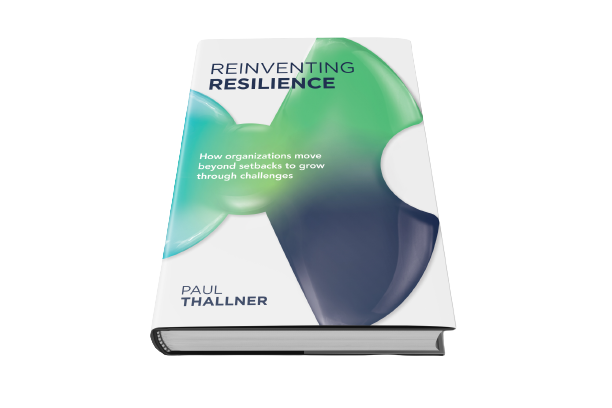A New Take on Resilience
We typically think of resilience as getting up after being knocked down. But, getting up puts you in the same spot where you got knocked down. Is this really worth celebrating? We need to think of resilience as growing through challenges vs. surviving them.
We’ve seen tons of articles about “building resilience during challenging times.” But, the reality is companies don’t develop resilience in times of great challenge, they develop resilience for times of great challenge.
Companies are like giant brains primed to react collectively to inputs. This means companies can have impulsive, instinctive, fear-based responses to threats the same way individual people do. But, when leaders dispassionately understand the reality of their company’s situation (even if it’s unpleasant) they can assess threats better and steer the organization where it needs to go (while keeping employees from losing their sh*t).
The Five Reinventions of Resilience
Scalable. Resilience strategies apply to teams, organizations, communities, and even countries.
Strengths-based. We’ve been thinking about resilience backwards. We’ve focused on our deficits rather than our resources that allow us to do much more than bounce back.
Storable. Discovering our resilience when we’re flat on our face leaves too much to chance. Resilience is a set of qualities that can be strengthened and stockpiled.
Sustainable. Resilience is not simply about surviving challenges but recognizing our courage and confidence to grow through them and be better prepared for future headwinds.
Strategic. Above all, intentionally building organizational resilience – instead of hoping it’s there when needed – can be road mapped and incorporated into organizational systems.
